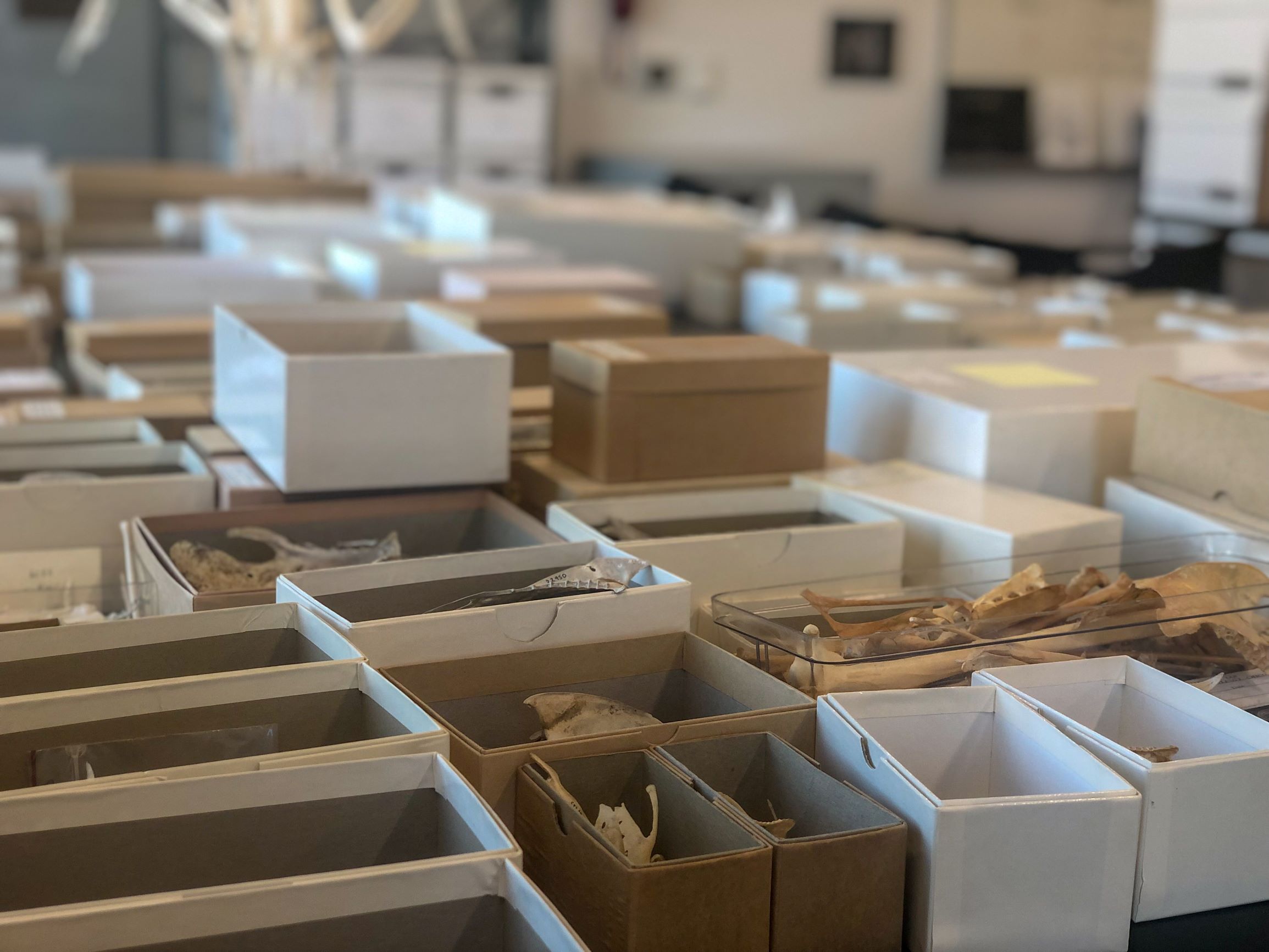Human Osteology Lab and Reference Collection
The Osteological Laboratory houses the human osteological reference collection and paleoanthropolgy cast collection. The human osteological reference collection includes complete and fragmentary skeletal remains and is primarily used for teaching. Courses utilizing the collections include Human Osteology, Forensic Anthropology, and Paleoanthropology. The lab also houses anthropometric equipment, chiefly for field use.

OSTEOLOGICAL REFERENCE COLLECTION
 The complete-skeleton collection is represented by over 4,100 specimens, including
over 500 fish, 700 reptiles and amphibians, 1,200 birds, and 1,700 mammals.
The complete-skeleton collection is represented by over 4,100 specimens, including
over 500 fish, 700 reptiles and amphibians, 1,200 birds, and 1,700 mammals.
This is complemented by more than 30,000 mammal skulls and skins held in the main NHMU collection. The collections originated and developed during decades of field surveys undertaken by faculty and students of the University of Utah. They continue to grow through ongoing research and associated collecting.
Skeletons are time-intensive to prepare. Each on must be partially prepared by hand, and then exposed to a colony of dermestid beetles that devour the remaining soft tissue and clean the bones. Finally, every bone from each skeleton is washed, dried, and individually numbered. Each individual skeleton is stored disarticulated in a separate box.
Recent collecting and skeletal preparation associated with the Homestead Cave project has resulted in one of the largest series of Bonneville Basin fish skeletons in the world, including four Bear Lake endemics.
Although the Museum holds 20,000 bird skins, the avian skeleton collection has grown
to over 1,200 specimens in the last 18 years. Most of these specimens are Great Basin
taxa, but the collection is also well-represented by Pacific Coast seabirds.
With more than 30,000 specimens, the Museum's mammal collection is one of the largest in western North America. It includes nearly 300 species, representing 52 families and 13 orders. Although mammals from throughout the world are represented, 90% of the specimens are from Utah and surrounding states. The collection includes holotypes of Utah mammals - the 12th largest number of types in North American collections.
The collections are organized taxonomically and housed in a library-like system of specially designed cases. Detailed data associated with each specimen is entered into a computer database and used to generate labels that accompany each specimen.
Teaching Lab
The Osteology Teaching Lab provides a space and materials for student engagement with hands-on learning and research experiences focused on human and non-human skeletal remains. The lab is used to teach courses at both the undergraduate and graduate levels on human osteology, forensic anthropology, zooarchaeology and paleontology.
Courses taught in the Teaching Lab
ANTH 1020 Human Origins, Evolution and Diversity
